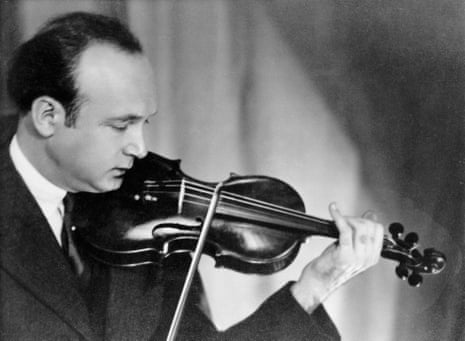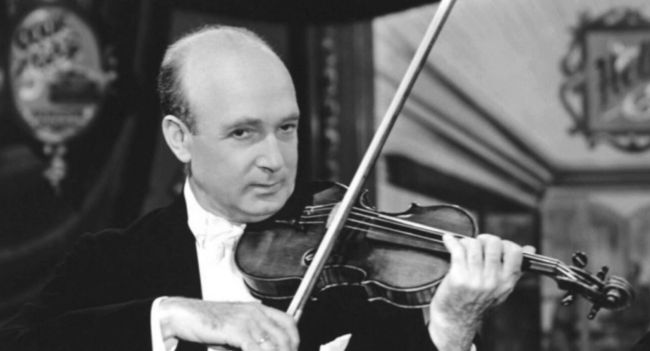
According to pedagogue Carl Flesch, Szigeti was “extraordinarily lovable as a human being,” and “adroit both culturally and socially.” But he acquired his culture the hard way. Raised in the Carpathian Mountains among a clan of fiddle-playing uncles, at eleven Szigeti became a student of Jenö Hubay, in whose class, he would later write, there existed “an atmosphere of such puerile technical rivalry, we were… completely absorbed by the externals of our craft.” Szigeti attributed this situation not to Hubay, but “above all, to our parents who generated such unhealthy impatience…” This impatience led Szigeti to launch a solo career at just thirteen.
Out in the wider world, hearing Ysaÿe, Kreisler, Elman—players with exciting new approaches to sound and interpretation—he realized his own playing was old-fashioned and provincial. He found musical mentors, especially the pianist Ferrucio Busoni, with whom he studied Bach’s Chaconne. And he worked to modernize his tone, which in maturity was beautifully noble, if prone to occasional rasping and scratching from excessive proximity to or distance from the bridge. Szigeti also suffered from a quite slow vibrato. But for most listeners, these flaws didn’t distract from his compelling musicality. For several decades mid-century, Szigeti was among the best-compensated and most-requested soloists, excelling in a distinct repertoire of Bach, Mozart, Beethoven, Brahms, various works of Hungariana, and music of living composers—as attested to by his recorded legacy.
Two early recordings of Hubay pieces, The Zephyr and Waves of Ballaton, display Szigeti’s technical skill and mastery of the Hungarian salon style. Collaborations with Bartók in that composer’s more elemental Hungarian idiom include a historic Contrasts, played with Goodman, and a thrilling First Rhapsody and atmospheric Second Sonata, part of a full recital Szigeti and Bartók gave at the Library of Congress, which also includes a spontaneous, creative Beethoven “Krewtser.” Szigeti often recorded Beethoven sonatas with great pianists of the day. An A Minor, Op. 23, with Arrau, is sharply etched and arrestingly dramatic. In Op. 96, Szigeti and Schnabel create extraordinary colors together, moving and phrasing as one.
Szigeti’s Chaconne, though laden with slides and vibrato not to modern tastes, is compelling in its rhythmic power, and intriguing in its bow-stroke choices. The Beethoven Concerto, with Bruno Walter and the British Symphony, shows Szigeti at his best, fully present, engaged in musical details at the minutest level, and again making brilliant character choices with his strokes. Other standout concerti are the Bloch with Mengelberg and the Concertgebouw, as intense in its cadenza as it is plaintively-colored in its Andante; an assured and elegant Mozart D major with Beecham and the London Philharmonic; and a Prokofiev First, again with Beecham and London, that is crystal clear in its shaping and characters, and completely convincing for listeners of any era.
